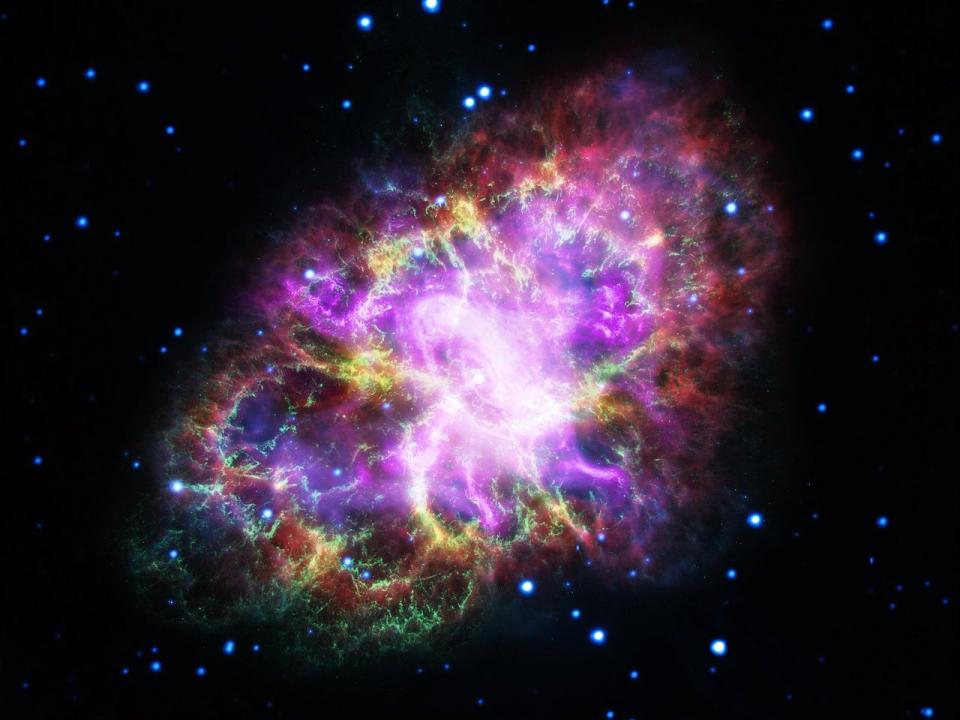Glass windows are made from the same material as stardust typically found in galactic supernovas

Pete Souza/The White House via Getty Images
Dr. Jeonghee Rho from the SETI Institute discovered that supernova blasts are strong enough to bond oxygen and silicon to form silica, a compound that also makes up about 60% of the Earth's crust.
The silica produced from supernova explosions is also linked to the formation of other planets and asteroids.
Silica is the main component of basalt and sand, which are processed to make glass used for construction.
The next time you admire the universe through your window, spare a thought for the window itself. New observations of supernovas have found enough silica, the raw material for window glass, to indicate they are the source of this material on Earth.
The Big Bang produced hydrogen, helium, and lithium. A few other light elements, such as oxygen, are made during stars' lifetimes. Most, however, require dramatic events, such as supernova explosions or neutron star mergers to come into existence. “We are stardust” is more than poetic license.

NASA/Getty Images
While silicon has long been thought to be a product of supernovas, Dr Jeonghee Rho of the SETI Institute has taken this a step further, revealing the enormous winds released by these mighty explosions bond silicon with oxygen to form silicon dioxide, also known as silica.
Rho used the Spitzer Space Telescope to search for the spectrum of silica in the supernovas Cassiopeia A and G54.1+0.3, respectively some 300 and 2,000 years old and in our galaxy.
Not only did she find the spectrum, but follow-up observations reported in the Monthly Notices of the Royal Astronomical Society reveal these explosions produced enough silica dust to explain the amounts we see in the early universe.

NASA, ESA, G. Dubner (IAFE, CONICET-University of Buenos Aires) et al.; A. Loll et al.; T. Temim et al.; F. Seward et al.; VLA/NRAO/AUI/NSF; Chandra/CXC; Spitzer/JPL-Caltech; XMM-Newton/ESA; and Hubble/STScI
The paper provides wide error bars on the estimates of silica produced, but at maximum G54.1+0.3 produced 90 percent of a solar mass' worth of dust. Even the lowest estimate is a twelfth of the Sun's mass – at which rate it is easy to see how the debris from one supernova could have supplied all the silica needed to make the Solar System's rocky planets and asteroids, with plenty left over.
Read more: How close a supernova would have to be to wipe out all life on Earth
Silica makes up almost 60 percent of the Earth's crust. In its pure form it makes up quartz, and is also the main component of basalt and most sand. We turn it into the glass and cement from which we construct cities. Yet until now, we have not known its origins. While elements are forged in stellar explosions, most of the compounds around us were made on Earth, where the presence of water enables a diversity of chemical reactions.

NASA/ESA
However, previous observations of silica dust in space indicated the silicon dioxide on Earth predates the planet. Supernovas were a likely suspect, but attempts to detect the silicon spectrum came to nothing. Rho suspected this was because people were looking for the wrong signal. The spectrum of a compound depends subtly on its shape. Rho thought the silica from supernovas would be ellipsoidal, like rugby balls, rather than round, and the observations fitted this almost perfectly.
Since the lenses and mirrors in optical telescopes are also made from silica, when astronomers study supernovas the observations are made using the products of those very explosions.
Visit INSIDER's homepage for more.
NOW WATCH: This NYC ballet dancer trains Victoria's Secret models
See Also:

 Yahoo News
Yahoo News 

